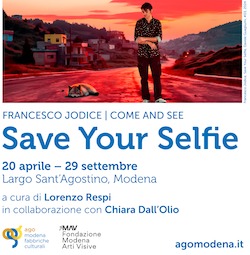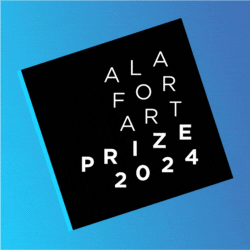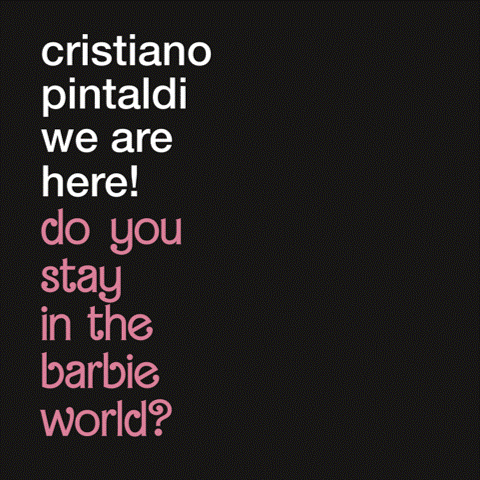[nemus_slider id=”45134″]
Scroll down for English text
26 punti di vista su uno tra i “generi” artistici più longevi nella storia dell’arte: la natura morta. Gli spazi della Cantina Antinori nel Chianti Classico – nella località Bargino, San Casciano Val di Pesa, dal 4 luglio al 4 ottobre 2015 -, ospitano le opere di una selezione di artisti compiuta dalla curatrice Ilaria Bonacossa, alla sua seconda mostra per Antinori Art Project. Nel giugno 2014, AAP ha ospitato l’installazione permanente di Tomàs Saraceno ‘Biosphere 06, cluster of 3’, mentre il prossimo autunno vedremo alla prova l’artista veneziano Giorgio Andreotta Calò nella realizzazione di un progetto appositamente realizzato per gli spazi a San Cascino.
La mostra “STILL-LIFE Remix. 26 artisti contemporanei reinterpretano la Natura Morta” ha come ambizioso obbiettivo di raccontare, in un excursus contemporaneo, un genere pittorico – Natura Morta / Still-Life – autonomo, come il paesaggio o il ritratto, in cui piante, fiori e frutti vengono riprodotti, insieme a prede di caccia, in composizioni prive della presenza di esseri umani. Questi assemblaggi, spesso arricchiti da oggetti simbolici come teschi, perle, libri o strumenti per la misurazione del tempo, rappresentano un monito alla fragilità della bellezza e all’inevitabilità della morte. La mostra riunisce circa quaranta lavori di ventisei artisti contemporanei, internazionali e italiani, che interrogano le possibilità espressive della natura morta. Alcuni lavori sono stati realizzati appositamente per l’esposizione che conta anche un’opera site specific.
Artisti: Giorgio Andreotta Calò, Arianna Carossa, Mat Collishaw, Hans Peter Feldmann, Stefania Galegati, Francesco Gennari, Ori Gersht, Piero Gilardi, Thomas Grünfeld, Gusmao & Paiva, Calla Henkel & Max Pitegoff, Georgie Hopton, Elad Lassry, Esko Männikkö, Davide Monaldi, Aldo Mondino, Nicolas Party, Jack Pierson, Namsal Siedlecki, Lorenzo Scotto di Luzio, Shimabuku, Shirana Shahbazi, Elisa Strinna, Wolfgang Tillmans, Santo Tolone, Luca Vitone
Alcune domande a Ilaria Bonacossa
ATP: Antinori Art Project ospita negli spazi della Cantina Antinori a Bargino la mostra “STILL-LIFE Remix. 26 artisti contemporanei reinterpretano la Natura Morta”. Perché hai scelto questo tema tanto affascinante quanto vasto per rimandi sia culturali che storici?
Ilaria Bonacossa: Tutta l’Italia sembrava improvvisamente ossessionata dal cibo in risposta al tema di EXPO feeding the planet…e mi sono resa conto che un tema classico come la natura morta era fortemente legato ai temi di EXPO ma anche un’importante categorizzazione storico artistica. Più ampliavo le ricerche e più mi rendevo conto che moltissimi artisti contemporanei si sono cimentati e tuttora si cimentano con la natura morta perchè è un tema in qualche modo eterno. Credo anche che per gli artisti, l’approfondire questo tema sia un modo di inserire il loro lavoro in una ‘storia’.
ATP: Ci sono delle opere in mostra in cui sono evidente i rimandi a delle opere importanti nella storia dell’arte? Anche in merito alle tue scelte, avevi come guida delle opere del passato a chi hai tratto ispirazione?
IB: Le nature morte del ‘600, in particolare quelle fiamminghe. Pieter Claesz, è uno dei miei pittori preferiti di quel periodo. Certo, non mancano gli esempi nell’arte italiana, penso alla canestra di Caravaggio, ai fratelli Campi di Cremona, mentre nel Novecento De Pisis – in occasione di questa mostra, la famiglia Antinori presenterà due tele di natura morta negli spazi delle collezioni – e Morandi con le sue nature morte di bottiglie. Ma penso anche anche al periodo della Metafisica con i Carrà. Guardando indietro è come se ci si accorgesse che molte rivoluzioni formali nella storia dell’arte sono passate attraverso l’elaborazione del genere della natura morta: il Cubismo con Braque e Picasso, ma anche Cezanne con le sue mele e Matisse con quella tela meravigliosa con il vaso di pesci rossi su un tavolo….
ATP: A tuo parere, perché gli artisti contemporanei sono ancora interessati alla Natura Morta?
IB: Credo che l’idea di rappresentare qualcosa di inutile, passato, non solo permetta loro di cimentarsi con una tradizione ma in qualche modo gli consente di potersi concentrare sul fare arte, sulla tipologia del lavoro e non tanto sul soggetto. Inoltre questo tema evoca il passare del tempo e l’ineluttabilità della morte, temi che anche con la scienza moderna e la post-modernità restano centrali alla vita di ognuno.
ATP: Rispetto alla vasta e complessa iconografia della ‘natura morta’ affrontato nella storia dell’arte, come è cambiato, a livello espressivo, questo tema nelle opere d’arte contemporanea?
IB: Il tema si è arricchito di oggetti, non nobili, dettagli della vita quotidiana che entra in molti tableau o fotografie o installazioni. Molte opere si confrontano con ironia con la tradizione, giocando a destrutturare un’iconografia data per scontata. Quello che però resta costate è l’assenza di esseri umani…
IB: In merito alla opere site-specific, mi racconti in cosa consistono e come si sono relazionate allo spazio a Bargino?
IB: Il giovane svizzero (formatosi a Glasgow) Nicolas Party ha creato un grande wall drawing per le pareti esterne del primo piano della cantina. Un wall painting fatto a pittura spray in cui mele e pere e frutta gigante dai colori improbabili circonda lo spettatore portandolo in un mondo onirico e surreale. Vedendo il lavoro mi è sembrato logico legare il lavoro di Party ad un genio come Balthus, le cui nature morte restano sorprendenti esperimenti pittorici. Parlando con l’artista che è rimasto sedotto dalla location, mi sono accorta che gli artisti disegnano, dipingono e fotografano la frutta per raccontare il fluttuare del tempo. Consapevoli che il singolo frutto dura a stento più di una settimana è come se cercassero di trasmettere ad uno spettatore anche di 100 anni dopo, cosa è una mela… o il mistero che si cela nella sua caducità.

STILL-LIFE Remix — 26 contemporary artists reinterpret the Still life
Artists in the show: Giorgio Andreotta Calò, Arianna Carossa, Mat Collishaw, Hans Peter Feldmann, Stefania Galegati, Francesco Gennari, Ori Gersht, Piero Gilardi, Thomas Grünfeld, Gusmao & Paiva, Calla Henkel & Max Pitegoff, Georgie Hopton, Elad Lassry, Esko Männikkö, Davide Monaldi, Aldo Mondino, Nicolas Party, Jack Pierson, Namsal Siedlecki, Lorenzo Scotto di Luzio, Shimabuku, Shirana Shahbazi, Elisa Strinna, Wolfgang Tillmans, Santo Tolone, Luca Vitone.
On 3 July 2015, Marchesi Antinori, as part of Antinori Art Project, a platform for contemporary events dedicated to the visual arts and the artists of today, presents a new temporary exhibition, curated by Ilaria Bonacossa, on one of the major genres in art history: still life. “ STILL-LIFE Remix. 26 contemporary artists reinterpret the Still life” is the title of the show which runs from 4 July to 4 October 2015, and will be open to visitors at the Antinori winery in the Chianti Classico district, in Bargino, San Casciano (in the province of Florence). As indicated by the title, the exhibition is a contemporary excursus dedicated to an independent genre of painting, Still-Life, or Natura Morta in Italian, whose status is comparable to landscapes or portraits, In the still life, flowers and fruits are depicted along with game, in compositions that have no human presence. The compositions are often embellished with additional symbolic objects such as skulls, pearls, books, or timepieces, and their message is typically a warning of the ephemeral nature of beauty and the inevitability of death.
Still-life Remix presents about forty works by twenty-six Italian and international contemporary artists who have worked on the expressive possibilities of still life. Some of the works were specially created for this exhibition, which also includes a site-specific piece.
The show includes new artists as well as figures with a consolidated reputation in the field of contemporary art. It encourages viewers to look at the reality around us from a new point of view. Why are contemporary artists still interested in Still Life, considering the ubiquitous use of photography and the constant visual bombardment by multinational food companies? How have the themes of still life changed, and the visual languages that are used?
From the second half of the 16th century, artists developed an extraordinary skill in representing the splendour of nature, metaphorically halting the process of transformation and decay. Still life paintings therefore became physical depictions of the fleeting nature of earthly life, with symbols of temporal impermanence, such as clocks and skulls, accompanying tables set with foods, flowers and animals. As a pictorial genre, the still life reached its height of development in the early 17th century, becoming a subject particularly popular with collectors and art traders. In the years of modern art, still life painting became an important theme that was used to reinterpret tradition and classical iconography. For example, the Fauves, Cubists and Surrealists completely overturned the Still Life as a genre from the compositional point of view. In Italy, this type of subject matter was fundamental in the work of two great masters, Giorgio Morandi and Filippo De Pisis, who seemed to capture the country’s moral stance within their small canvases.
The exhibition Still-life Remix presents a group of works using the media of photography, sculpture, painting and video, illustrating how still today the visual format of Still Life can be used to express the passage of time by means of the depiction of an impossible balance between nature and artifice. The works presented show that artists today can still use Still Life to narrate their perception of the world around us, with its human fragility and the impermanent nature of happiness on earth. All together, they show that this genre, midway between pictorial tradition and pop photography, is very much alive today and capable of expressing intense emotion.
The works demonstrate how the values of composition and chromatic balance have been reconsidered and completely transformed, transferred to the contemporary plane in order to enhance the efficiency of each individual piece. For example, the images by Wolfgang Tillmans show how the genre has changed, capturing everyday life and the remains left by a human presence in a given location. Pieces by Ori Gersht demonstrate the close links between violence and beauty by means of unexpected explosions of still life compositions that are worthy of the finest 17th-century Flemish canvases. Two new artists, Santo Tolone and Elisa Strinna, take an ironic stance, transforming classical iconography into something very different.
The exhibition, staged in the evocative spaces of the Antinori winery in the Chianti Classico district, is also intended as a tribute to the way in which the exhibition was commissioned. The show is part of the Antinori family’s ongoing passion for art, continuing a century-old tradition of interest which, today just as in the part, reflects an ongoing commitment to creating a powerful link between the finest historical expressions and the contemporary milieu.
In response to the exhibition Still-life Remix, the Antinori family has decided to present some works from Palazzo Antinori in the spaces dedicated to the collections in the winery. These include a large 17th-century Flemish still life painting, and two canvases by Filippo De Pisis in which the dusky, intimate tones of the inanimate objects are created by a light technique of rapid, broken brushstrokes.
Still-life Remix has obtained official recognition from Expo 2015 and it is part of Italy’s official cultural calendar during the six-month period of the exposition.
The Antinori Family. From a tradition of interest in art, to the Antinori Art Project.
Cantina Antinori, a winemaking company in the Chianti Classico district, is a symbol of the deep-rooted links that the Antinori have developed with the arts – painting, sculpture, architecture and of course the art of transforming the fruits of the earth into great wines –from as far back as 1385.
For over six hundred years, the Antinori marquisate have linked their family name to excellence in wine and also to the finest traditions of art patronage. These two areas may seem a long way apart, but in actual fact they have often been developed together. The Antinori family has often given art the role of describing the values and history of their House, whose emblem is itself a prestigious piece of art, created in the early 16th century by the Florentine workshop of sculptor and ceramist Giovanni della Robbia. More recently, after the inauguration of the new winery in 2012, an evocative and monumental structure designed by architect Marco Casamonti and set in the heart of the Chianti Classico district, part of the family’s collection of paintings, ceramics, valuable textiles and ancient manuscripts was transferred from the historic Palazzo Antinori in Florence to the new premises at the winery, with consultancy from Giovanna Giusti, curator at the Uffizi. This new location makes it accessible to the visitors who are present every day in the Chianti Classico area, in search of sensorial experiences linked to wine and everything that the area has to offer.
In order to provide a logical framework and a renewed impetus to the family’s projects dedicated to the contemporary visual arts, the Antinori Art Project was launched in 2012, based on the idea of continuing the family’s tradition of art collection, changing its direction towards the art and artists of today. Antinori Art Project is a platform for contemporary events, created in cooperation with important curators, comprising all the activities in this area within a single organizational structure. More specifically, the winery houses the family’s historic collection, with a museum space that is part of the visit to the winery; in addition, a special programme of annual commissions, many of which site-specific, has been launched, for young but already successful artists on the national and international scene.
In the two-year period 2012/2013, these activities were curated by Chiara Parisi and saw the involvement of Yona Friedman, Rosa Barba and Jean-Baptiste Decavèle. Last year, Ilaria Bonacossa was entrusted with the biennial artistic direction of the project, which featured Tomàs Saraceno who created the work Biosphere 06, cluster of 3 in the vertical space of the winery’s staircase. For next autumn, the invited artist is Giorgio Andreotta Calò (born in Venice in 1979, lives and works in Amsterdam).
Antinori nel Chianti Classico
Via Cassia per Siena, 133 Località Bargino – 50026 San Casciano Val di Pesa, Florence












